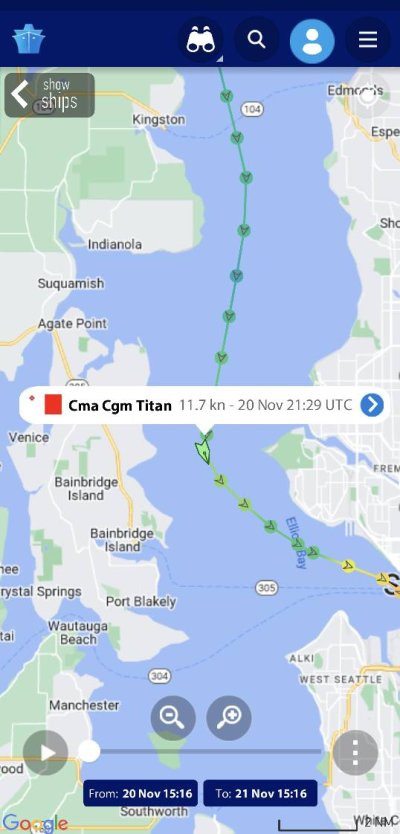Hello. Had a bit of a terrifying experience today. We are in Seattle, 2006 Nordic 32, returning from Poulsbo to go through the Ballard Locks and came across a very large, weighted down cargo ship (full of Christmas goods?). We didn't think we could cross the shipping lane in time so we went north, crossing it north as it headed south. We then did two large circles (about 15 minutes of driving around and heading north) before we crossed the wake. The wake was massive to us, there were two large waves, the first ~4 foot, the second ~6 feet. We were all a bit jostled, a few items went flying (water bottle, sunglasses) and we were okay (dogs were terrified), but it was definitely a LOT bigger than we anticipated. Especially that 2nd 6 footer. Water completely over the bow of the boat. WTF? We are trying to learn from this. Here are some specs:
Vessel: CMA CGA Titan
Length: 363 meters
Width: 46 meters
Gross Tonnage: 131332
Summer deadweight: 131236
We are not that experienced, but I have never heard of such massive wakes and to look out for them. Thoughts? I think we both feel a bit scarred. Boat, of course, took it like a champ, much better than us. Kind insights appreciated.
Vessel: CMA CGA Titan
Length: 363 meters
Width: 46 meters
Gross Tonnage: 131332
Summer deadweight: 131236
We are not that experienced, but I have never heard of such massive wakes and to look out for them. Thoughts? I think we both feel a bit scarred. Boat, of course, took it like a champ, much better than us. Kind insights appreciated.

